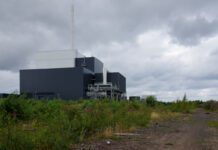
Trade group with oversight on “the cornerstone material for a net-zero future” sets out “ambitious plans” to reach net zero in Scope 1 and 2 emissions by 2050, and significantly cut Scope 3 emissions.
In a new roadmap launched on 8 March by the International Copper Association (ICA), one of the principal trade associations in the sector, members have seemingly aligned on an ambition to reach net zero in Scope 1 and Scope 2 emissions by 2050, and work toward the same goal for Scope 3 emissions.
Copper demand is set to double by 2050, and the ICA says the roadmap, Copper—The Pathway to Net Zero, sets out an ambition for its members—among the largest producers of refined copper in the world (although crucially, none from China, where most of the world’s supply is produced) —to reduce Scope 1 and 2 emissions by 30-40 percent by 2030 and by 70-80 percent by 2040. Regarding Scope 3 emissions, members will work with value chain partners to reduce emissions 10 percent by 2030, 30-40 percent by 2040, and 60-70 percent by 2050, said a statement.
“These collective ambitions show a clear trajectory to achieving defined emissions reductions of up to 85 percent by 2050, with the balance to be addressed through advanced technologies and enhanced collaboration with value chain partners.”
Refined copper production emitted an estimated 97 million tonnes of CO2 equivalent in 2018, according to the group’s figures. Scope 2 emissions accounted for 46 percent of these emissions, followed by Scope 3 at 31 percent and Scope 1 at 23 percent. This constitutes around 0.2 percent of global man-made emissions, said the group.
ICA estimates that certain industry needs and policy goals must also be met in order to hit the roadmap’s goals. These include further research and development into innovative technologies for emissions reduction, the decarbonization of local power grids and regulatory certainty, including fair and stable royalties and long-term mining licenses.
The roadmap states how ICA members will reduce Scope 1 and 2 emissions through four abatement levers based on market-ready and developing technologies: alternative fuels, equipment electrification, decarbonized electricity, and energy efficiency.
The group says the collective ambition outlined in the roadmap “is based on current knowledge of decarbonization technologies and on a set of sound hypotheses about availability at scale, and the cost and abatement potential of these technologies.”
“If required at all, carbon offsets and commercially unrealized technologies like carbon capture would be limited to minimal, highly specific cases.”
Described as “the cornerstone material for a net-zero future” by ICA president Anthony Lea, global demand for copper is expected to double by 2050.
Shehzad Bharmal, ICA Chair and Senior Vice President, Base Metals at Teck Resources, said the group “want to ensure that how we produce that copper is aligned with its most common end use of enabling and accelerating the low carbon transition.”
“ICA’s roadmap lays out a pathway to build on existing member company commitments to responsible copper development while meeting the growing demand for this essential material.”
Richard C. Adkerson, Chairman and Chief Executive Officer, Freeport-McMoRan, said the announcement of the roadmap “represents an important step and vital alignment across the copper industry to take practical, responsible steps toward a net zero mining future.”
Estimates as to how much copper will be required for the energy transition appear to vary widely. A 2019 letter authored by Natural History Museum Head of Earth Sciences Prof Richard Herrington and others, suggested that the amount required simply to replace all the vehicles in the UK with electric vehicles would require 12% of the world’s copper production.






